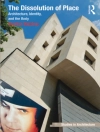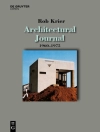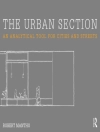American philosopher Nelson Goodman (1906-1998) was one of the foremost analytical thinkers of the twentieth century, with groundbreaking contributions in the fields of logic, philosophy of science, epistemology, and aesthetics. This book is an introduction to the aspects of Goodman’s philosophy which have been the most influential among architects and architectural theorists.Goodman specifically discussed architecture in his major work on aesthetics, The Languages of Art: An Approach to a Theory of Symbols (1968), and in two essays "How Buildings Mean" (1985), and "On Capturing Cities" (1991). His main philosophical notions in Ways of Worldmaking (1978) also apply well to architecture. Goodman’s thought is particularly attractive because of its constructive aspect: there is not a given and immutable world, but both knowledge and reality are constantly built and rebuilt. Whereas other theories, such as deconstruction, implicitly entail an undoing of modern precepts, Goodman’s conception of world-making offers a positive, constructive way to understand how a plural reality is made and remade.Goodman’s approach to architecture is not only relevant thinking in providing new insights to understanding the built environment, but serves also as an illustration of analytical thinking in architecture. This book shows that the methods, concepts, and ways of arguing characteristic of analytical philosophy are helpful tools to examine buildings in a novel and fruitful way and they will certainly enhance the architect’s critical skills when designing and thinking about architecture.
Remei Capdevila-Werning
Goodman for Architects [EPUB ebook]
Goodman for Architects [EPUB ebook]
购买此电子书可免费获赠一本!
语言 英语 ● 格式 EPUB ● 网页 144 ● ISBN 9781134660612 ● 出版者 Taylor and Francis ● 发布时间 2013 ● 下载 6 时 ● 货币 EUR ● ID 2815375 ● 复制保护 Adobe DRM
需要具备DRM功能的电子书阅读器












